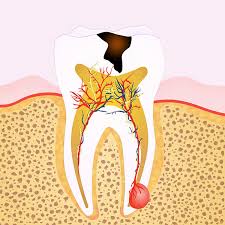
Undergoing a root canal treatment can be a significant step toward saving a damaged tooth and relieving pain. While the procedure can alleviate discomfort, ensuring a smooth healing afterward is crucial for long-term success and comfort. If you’re considering a painless root canal treatment in Mulund East, this personalized guide can help you navigate the healing process after a root canal.
Understanding Root Canal Healing
After a root canal, your tooth is cleaned, disinfected, and sealed. The goal is to remove the infected or damaged tissue inside the tooth and restore it to its natural function. Healing from this procedure involves allowing the tooth and surrounding tissues to recover and adapting to any changes in your dental health.
1. Follow Post-Procedure Instructions
Following your root canal, particular instructions for aftercare will be given by your dentist or endodontist. It is necessary to:
- Adhere to Prescriptions: If antibiotics or pain relievers are prescribed, take them as directed. Antibiotics help prevent infection, while pain relievers manage discomfort.
- Follow Care Guidelines: Follow any provided guidelines, such as avoiding hard or sticky foods for a specific period.
2. Manage Pain and Discomfort
Following a root canal, some soreness or minor pain is typical. This is how you handle it:
- Over-the-Counter Pain Relief: To ease any discomfort, take over-the-counter pain medicines like acetaminophen or ibuprofen, as directed by your dentist.
- Cold Compress: Applying a cold compress to your cheek near the treated area can reduce swelling and numb the area, providing relief.
3. Maintain Good Oral Hygiene
Proper oral hygiene is vital for ensuring a smooth healing process:
- Brush Gently: Brush your teeth twice daily, but be gentle around the treated area to avoid irritation.
- Floss Carefully: Floss daily, making sure to do so gently around the treated tooth. This helps prevent plaque buildup and promotes healing.
4. Watch What You Eat
Diet plays an important role in the healing process:
- Avoid Hard Foods: Limit your diet to soft, easily chewed foods for the first few days. Foods that are hard or crunchy may hurt or harm the tooth that has been treated.
- Avoid Sticky Foods: Sticky or chewy foods can put extra pressure on the treated area and may lead to discomfort.
5. Avoid Chewing on the Treated Tooth
Until your tooth is fully restored, it’s best to avoid chewing on it:
- Use the Opposite Side: Chew on the opposite side of your mouth to prevent putting pressure on the treated tooth. This can help avoid any potential complications.
- Be Mindful: Pay attention to how you use your teeth while eating and speaking to avoid unnecessary strain on the treated area.
6. Attend Follow-Up Appointments
Regular follow-up visits with your dentist are crucial for monitoring your healing progress:
- Check-Up Visits: Your dentist will schedule follow-up appointments to check the healing process and restore the tooth properly.
- Address Concerns: Kindly get in touch with your dentist right away if you encounter any uncommon symptoms, such as continuous discomfort or swelling. Complications can be avoided with early action.
7. Avoid Smoking and Alcohol
Certain habits can affect your healing process:
- Avoid Smoking: Smoking raises the risk of problems and can impede the healing process. Steer clear of smoking as much as you can while you’re healing.
- Limit Alcohol: It may interfere with medication interactions and slow the healing process. During your rehabilitation, cut back on your alcohol use or abstain from it entirely.
8. Be Aware of Possible Side Effects
Knowing what you can expect will assist you in managing your recovery:
- Normal Side Effects: Mild discomfort, swelling, and sensitivity in the treated area are normal and should subside within a few days.
- Seek Help for Severe Issues: If you experience severe pain, excessive swelling, or signs of infection, such as fever or pus, contact your dentist immediately for evaluation and treatment.
9. Consider a Permanent Restoration
After the initial healing period, your tooth may need a permanent restoration:
- Dental Crown: Your dentist will likely recommend placing a dental crown on the treated tooth to protect and restore its function. This is typically done a few weeks after the root canal.
- Timing: Follow your dentist’s recommendations for when to schedule the crown placement to ensure the tooth is fully healed and ready for the final restoration.
10. Practice Good Overall Health
Your overall health can impact your healing process:
- Stay Hydrated: Drink plenty of water to keep your body hydrated and support overall healing.
- Eat a Balanced Diet: A diet rich in vitamins and minerals can aid healing and promote overall oral health.
Conclusion
Ensuring a smooth healing process after a root canal treatment involves following your dentist’s instructions, managing discomfort, and maintaining good oral hygiene. By being mindful of your diet, avoiding harmful habits, and attending follow-up appointments, you can support your recovery and protect your treated tooth. Remember, the goal is to restore your tooth to its natural function and ensure long-term oral health. Your root canal treatment can provide lasting relief and a healthy smile with proper care and attention.







